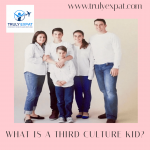We live in a distracted world where we are bombarded with information and advertisements throughout our days. We see people in the streets, on the bus, in queues, all looking at their devices. There is no doubt that this connectivity has advantages, but what is the cost to our personal relationships? To our sense of happiness and wellbeing? To our feelings of connectedness? What are we missing?
In a 2020 interview, Oprah Winfrey reflected that throughout her career, she’d interviewed over 37,000 people from every walk of life. She said no matter who she was interviewing, they all turned to her at the end and asked if she thought they did OK. Oprah said the one thing we all have in common was to feel seen and feel a personal connection. What is getting in the way of us seeing each other?

As a parent and researcher, I don’t have all the answers, but I want to share some resources and strategies that might help us reconnect, with ourselves, each other, the larger world. I wanted to take the most helpful things that I have learnt and put them together in a book designed for parents who are seeking that deeper connection.
Over the last few years, I’ve developed a five-step framework called the ‘Sparks’ to help parents connect with their children. This simple framework encourages children to reflect upon moments and allows them to find meaning, leading to them finding their own voice and agency and strengthening their resilience.

Meaning can be found in the simplest of experiences. While not religious, this book explores the lived experience of spirituality in children. Spirituality that recognises the dimensions of art and wonder, creativity and imagination, reflection and that at the heart of each of us are the relationships we nurture and sustain.
In the book, I have exercises for parents and children, including mindfulness and meditation practices and reflection exercises. I have a chapter on discovering our strengths and the role this can play, from taking happiness as something ‘out there and far off’ to something we can see every day. 
Let me give you an overview of the Sparks framework that I outline in the book. The first step is called Sparks, and it relates to moments in a child’s day that spark an emotional response—from happiness, awe, wonder, curiosity, or fear. These could be a significant event such as a trauma or a crisis or simply an everyday event that causes questions to arise for a child.
As parents and caregivers, we can tune into these moments and invite children to reflect upon them. The second step is Honoring the Sparks. This step involved providing opportunities for children to re-enter their experiences and events in a safe and nurturing environment. It involves parents and caregivers to listen deeply to children, ask open-ended questions and allow the child to begin to explore the experience in more detail.
Bedtime and bath time are perfect opportunities for this to occur.

The third step is Sharing the Sparks. As children share their ideas and thinking with others, they can hear their own stories anew as well as share in the experience of others. Children also grow more aware of themselves as separate from others and the environment.
They become aware of the presence and experiences of others, where they might be similar, and where they differ. Finding Meaning in the Sparks is the fourth step. Children to begin to look for and make Meaning from events. An interesting thing occurs at this stage, as children move from perceiving themselves as an active participant or protagonist in their own stories to stepping back and seeing themselves in the third person as if a theorist.

At this stage, children can articulate their thoughts and feelings to others and learn to see the connection between their own and another’s experience. Here, stories can be seen in their fullest and most generative way.
And finally, Being Transformed by the Spark, where children transcend the bounds of themselves and move towards an increased level of self-awareness. Children are also able to experience the mystery of life and hold the ‘not-knowing or ‘not-knowing-yet’ with respect to some experiences. Here they see themselves as strong and capable and develop resilience.
As you move through each step, you will see how the process deepens both your children’s reflective capacity as well as your own. It also helps make their inner lives more visible. As a parent or caregiver, you don’t need to be an expert. You simply need to be willing to create a safe, nurturing space for children and to listen deeply to their experiences.
If you’d like to learn, please have a look at my book; ‘Unplugged: How to disconnect from technology and reconnect with each other.
Thanks for reading my blog! Want more information about Dr Kristen Hobby? Read all about her expat experience here.
Other things you need to know
This post may contain affiliate links, which means I/we may receive a commission at no extra cost to you if you make a purchase through a link. Please see my/our full disclosure for further information.
Check out my Instagram page or join my Facebook group
Pin for later!

You may also like




